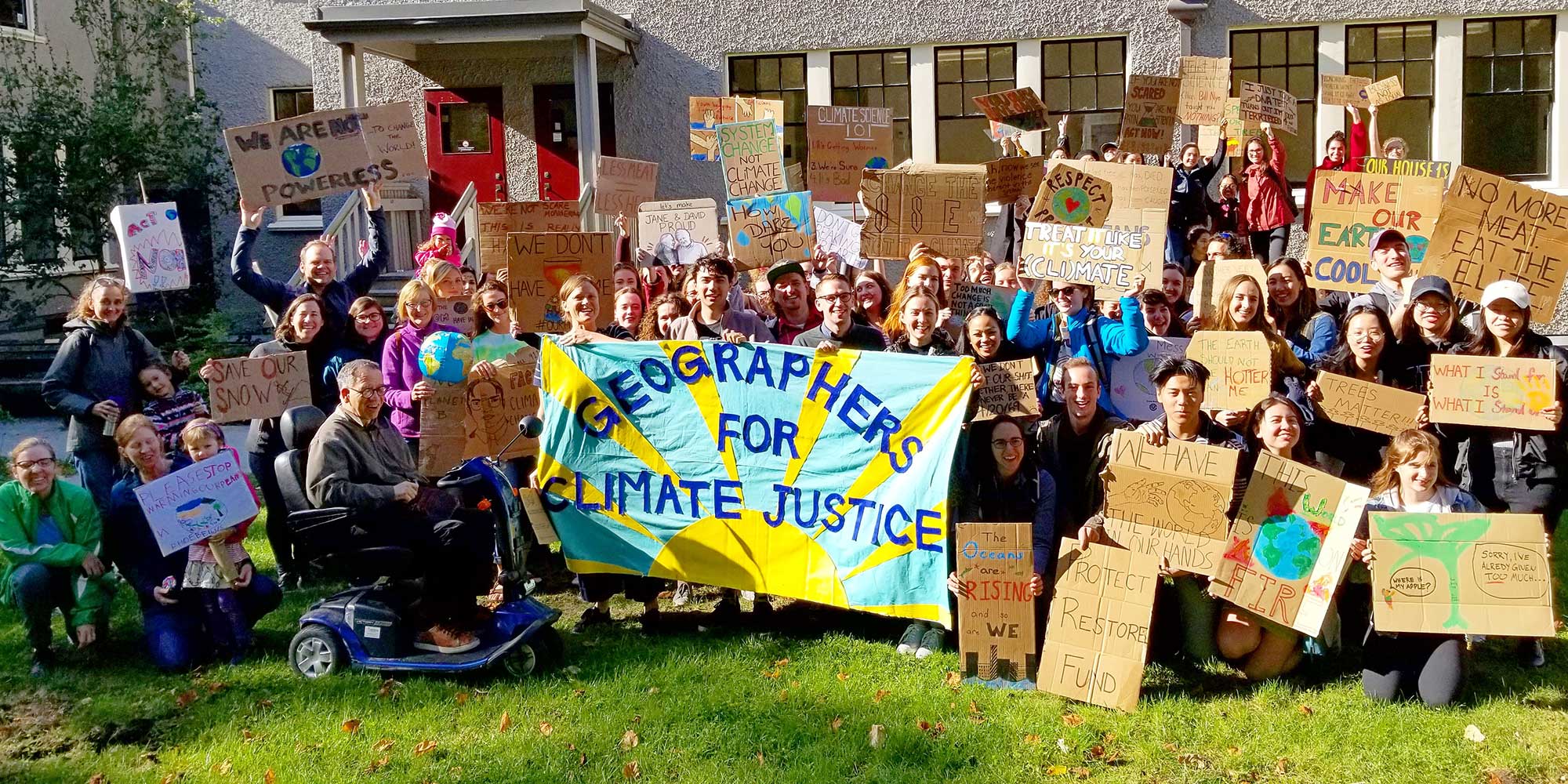UBC Geography is a world leading research department, and home to outstanding teaching practice. We welcome students from all backgrounds to join our community of learners.
As geographers, we study the natural and social processes that create and reshape our environment. Our courses examine the interconnectedness of society and the natural world from perspectives both global and local.
We take an interdisciplinary approach to the study of the natural environment, and are committed to addressing the ongoing climate crisis through our teaching, research and practice. Our goal is cutting-edge research that matters and makes a difference, intellectually and practically.
No single set of ideas or methods can ask all the important questions or provide all the appropriate answers, and together we draw on and contribute to the arts and humanities, the social sciences and the biophysical sciences. We strive for a critical and ethical approach to the world and our place within it.
Our History
First established in 1915 as the Department of Geology and Mineralogy, the current Department of Geography at UBC has a long history of academic success
The origins of the UBC Department of Geography go back to the establishment of the Department of Geology and Mineralogy in 1915. A half-year course in Physical Geography, given in the fall of 1915, has become, in the form of the year-long Geography 101, the oldest continuing geography course in any Canadian university.
In 1922-23, the name of the Department was changed to Geology and Geography, and UBC became the first Canadian university to have Geography as an academic division. The faculty consisted of three full-time members.


Construction of the “temporary” Geography Building circa 1925.
When the University of British Columbia moved to its present Point Grey site in the fall of 1925, the Department of Geology and Geography was placed in a “temporary” building. That building is the present UBC Geography Building, completely rebuilt inside during the late 1970s, and still standing after almost 100 years.
In the fall of 1946, J. Lewis Robinson was appointed to organize and expand the Geography program at UBC. Robinson was the first PhD in Geography to be appointed at UBC. He was joined by John Chapman, from Oxford University, in 1947, and J. Ross Mackay, from McGill University, in 1949 to lead the Geography programs at UBC.
In the 1947-48 session, the department offered 12 Geography courses with a total enrollment of 750 students. A graduate program was then started in 1947 and the first Honours students in Geography graduated in 1948.
In 1959, Robinson became the first Head of the newly defined Department of Geography. In the next decade, undergraduate enrolment in Geography courses became the largest in any Canadian university. Additionally, graduate students in residence increased from 14 to 33 between 1960 and 1965.
As enrolment grew, so did the programs that were offered. In 1962, a PhD program in Geography was introduced. 1972 saw the introduction of a new BSc program in physical geography which was followed by a MSc Physical Geography program in 1975. Then in 1988, the Atmospheric Science program (sponsored cooperatively by the Departments of Oceanography and Geography) was initiated.
The faculty increased steadily during the 1970s, to a total of 23; by the end of the decade there were 81 undergraduate and 28 graduate courses in Geography, 50 graduating BA Majors and 10 graduating BSc Majors and Honours students, over 50 graduate students in residence, and a total student enrolment of over 2,000.
During the 1980s the number of students exceeded 3,000 and the number of permanent, full-time faculty increased to 25.5. The new faculty in part were appointed as a result of the Department’s success in being awarded two new programs from the Provincial Funds for Excellence in Education, in Atmospheric Science and the Geography of Japan.
Today, the Department contains between 4,000 and 4,500 undergraduates and supervises about 80 graduate students. An external review of the Department in 2000 judged it the top all-round Geography Department in Canada, and comparable to the top five programs in the United States and Great Britain.
